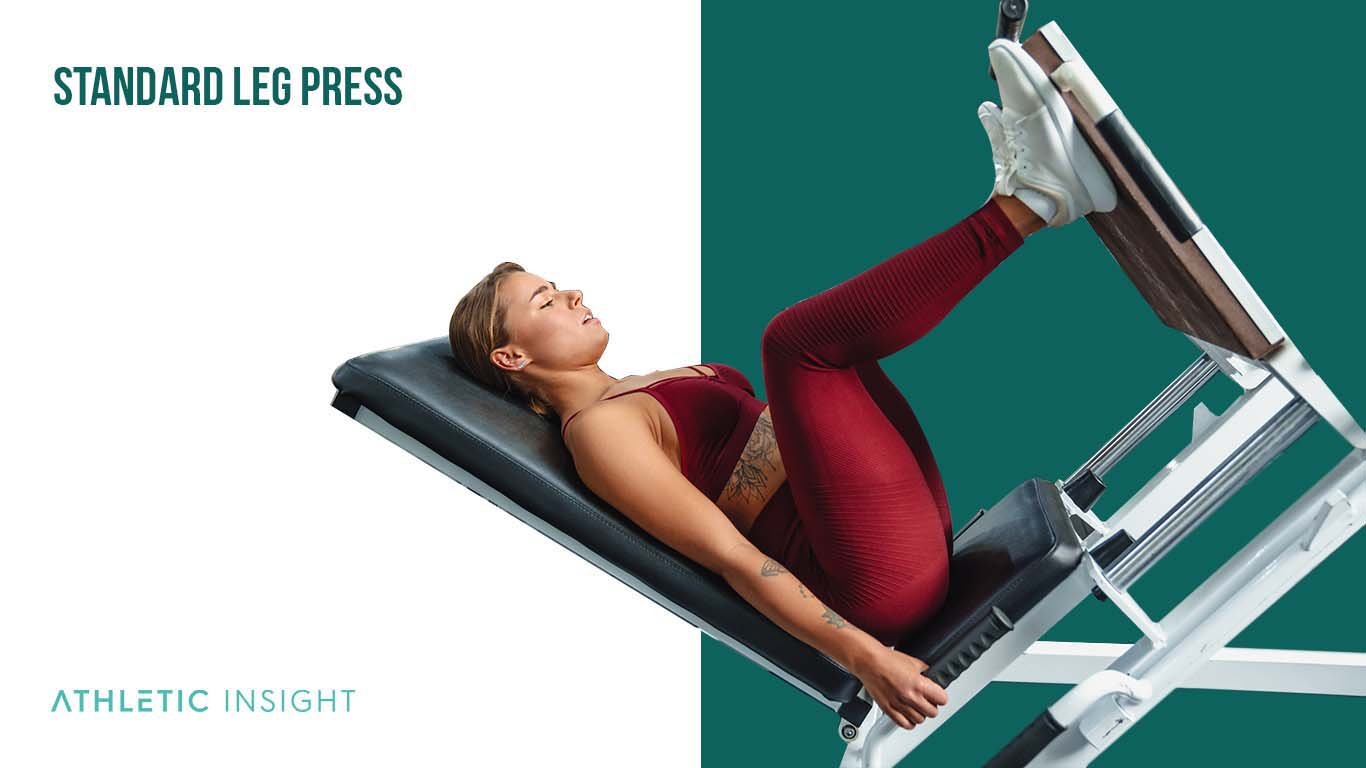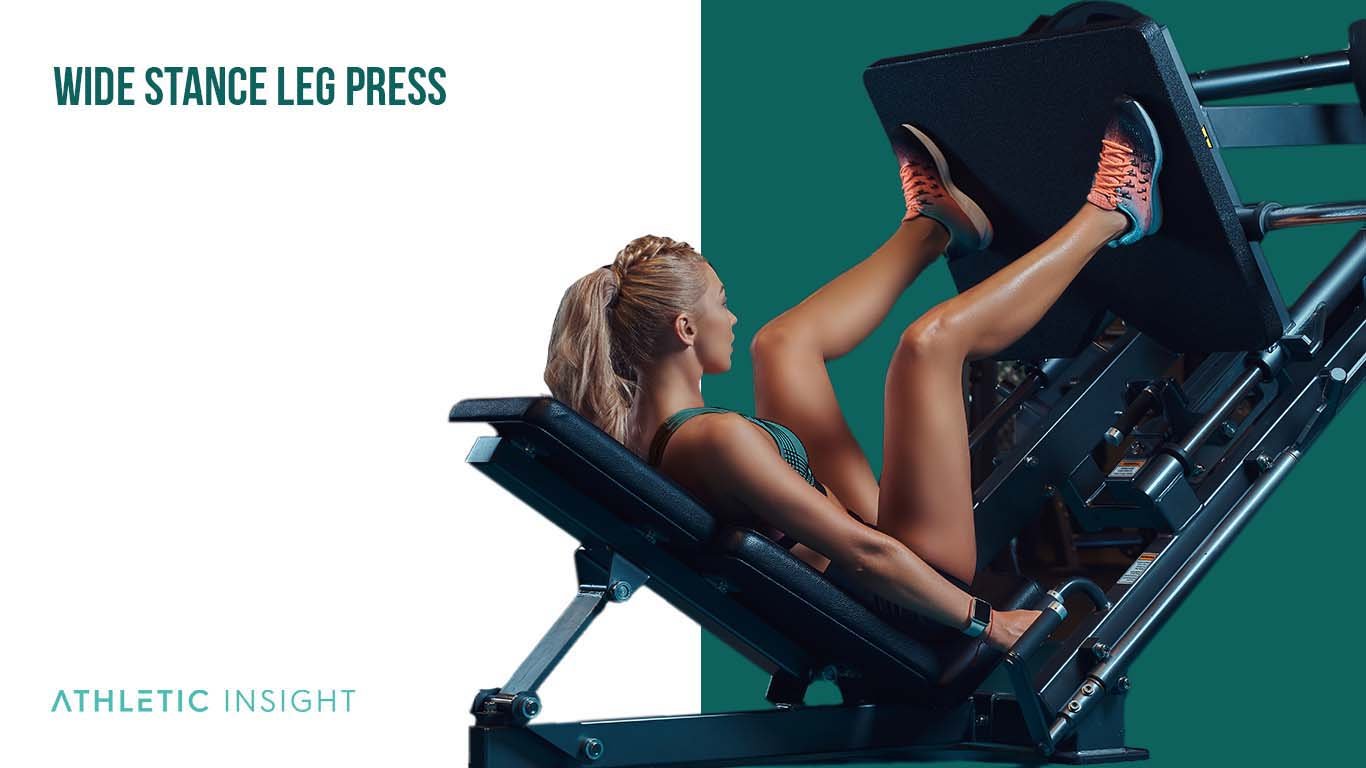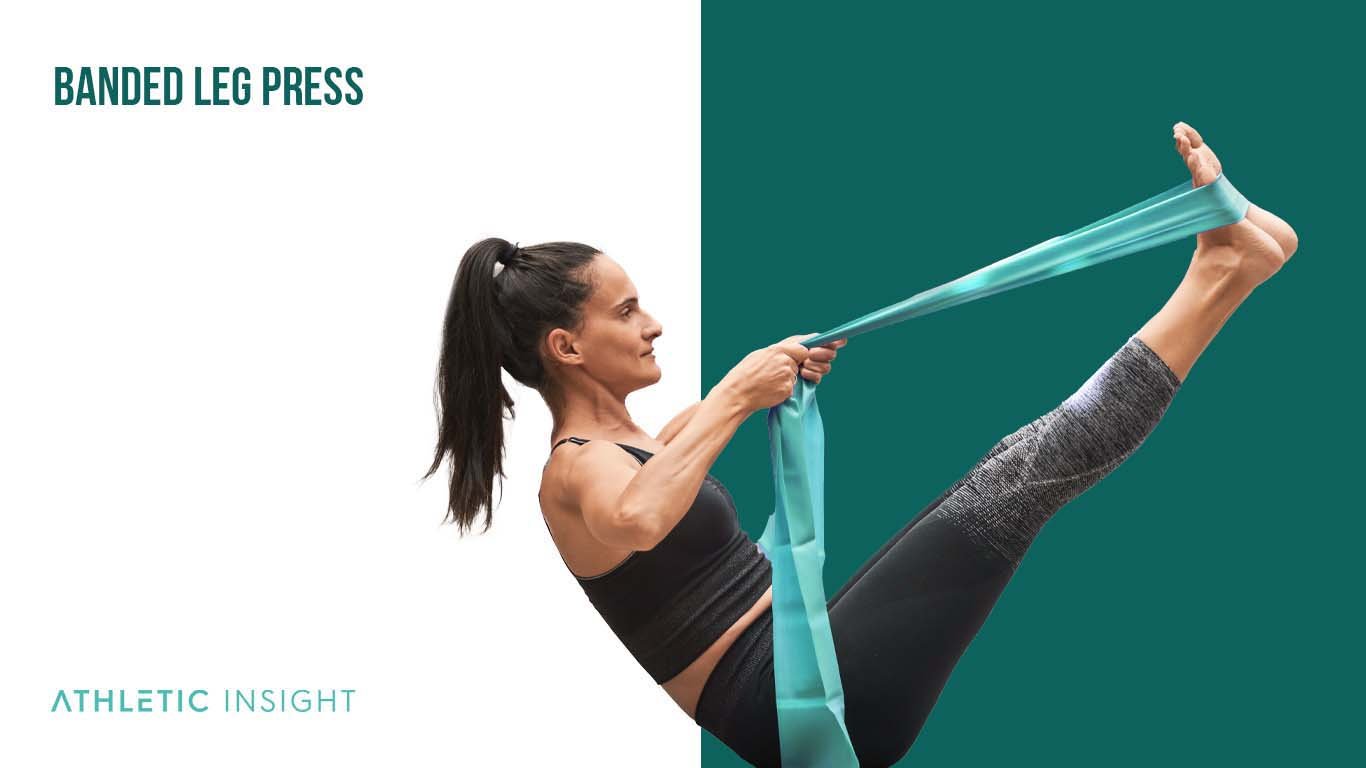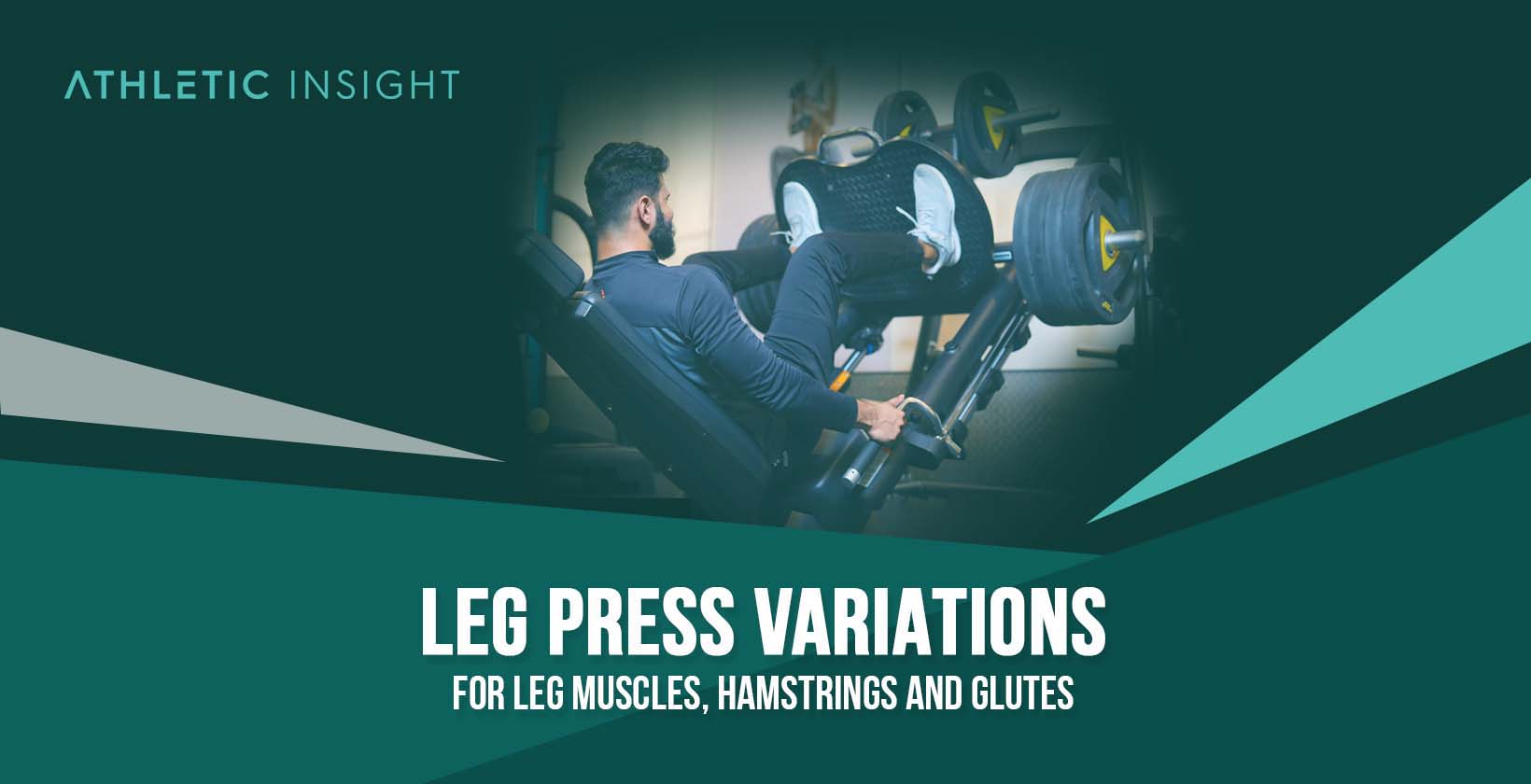A leg press exercise is a highly effective lower-body movement. This seated isolation exercise targets muscle groups, including the hamstrings, glutes, and quadriceps. Different feet placement and positions target different muscle groups more than others.
The leg press is an important exercise to master because it is a compound exercise. Compound exercises strengthen several muscle groups at the same time and are essential in a well-rounded workout routine. Consistently working multiple muscle groups can help improve mobility and reduce the chance of injury.
There are a few leg press machine variations, including the standard horizontal leg press, which is the most common in large gyms and is also known as the seated leg press. The other two leg press types are the 45-degree leg press and the vertical leg press. There are several horizontal leg press variations.
Weight-related variations for the leg press involve adding resistance to a leg press in one of two ways: use a plate-loaded or a selectorized weight leg press. With a plate-loaded machine, simply add plates to the machine to add resistance. Selectorized weight machines are the most common in large commercial gyms.
There are also several different leg press variations, including the classic leg press, wide stance, narrow stance, high foot placement, low foot placement, banded, and escalating.
The leg press is a classic exercise for lifters at all skill levels, provided they use the appropriate amount of weight. Advanced lifters, like competitive bodybuilders and strongmen, can increase strength and mass by adding extra weight and working in variations to engage the muscles from different angles.
1. Standard Leg Press
The Standard Leg Press is a leg press exercise variation that is appropriate for most skill levels and types of lifters. It primarily targets the quadriceps, but it also engages the glutes and hamstrings. This variation assists with overall leg strength development.

This is an appropriate leg press variation for both women and men. It’s easy to adjust the amount of weight to be higher or lower depending on the athlete’s skill level.
Since this movement primarily works the quad muscles, it is beneficial for improving overall leg strength. This compound lifting movement can help athletes improve crucial functional skills like balance and stability. It can be especially useful for athletes that require leg strength, including soccer and hockey players.
This leg press variation primarily works for the quads because of its limit in the range of motion and positioning of the feet. Alternative exercises of the standard leg press include the traditional squat exercise, which also primarily targets the quads. Additionally, a weighted wall sit similarly challenges the quad muscles.
Some common mistakes while performing the Standard Leg Press are setting the feet too close together or too far apart. They should remain about shoulder-width apart to appropriately do this movement. Further, using too much weight can prevent lifters from maintaining proper form, increasing the chances of injury.
For the Standard Leg Press, it is simple for beginners to achieve proper form. There is no complicated placement or range of motion. This standard version of the leg press focuses solely on the lower body and remains a popular exercise for most lifters.
2. Wide Stance Leg Press
The wide stance leg press exercise variation targets the glutes for building strength, mass, and stability. All types of lifters, including athletes, weightlifters, and bodybuilders can benefit from incorporating a wide stance leg press into their lower body routines.

Leg press foot placement variations allow athletes to target muscles from different angles during a workout. The Wide Stance Leg Press places the feet slightly wider than shoulder-width apart and higher on the platform rather than in the middle. This movement is great for targeting the glutes because the foot placement allows for a wider range of motion. Deep movements will activate the muscles here.
The Wide Stance Leg Press is ideal for men and women focused on strengthening and growing their glutes and hamstrings. It also is a great movement to work on hip abductor strength. Hip abductors are the muscles that wrap around the side of the hip and include the gluteus medius and gluteus minimus. Strong hip abductors can help prevent injury and improve overall performance.
The most common mistakes involve improper form, primarily foot placement. Push through the heels to activate the glute muscles and keep the toes pointed slightly out. Also, be sure to push the knees outward during the movement to avoid injury and ensure proper activation.
The Wide Stance Leg Press is beginner-friendly, but sometimes it may be tricky to master the foot placement. Though it is a lower-body exercise, poor form or excessive weight can also strain the lower back muscles.
The wide stance leg press is a leg press exercise variation. It does not have other variations, but there are alternatives for athletes hoping to target the glutes. Hip thrusts and glute bridges are alternative exercises that focus on the glutes and hamstrings.
3. Narrow Stance Leg Press
The Narrow Stance Leg Press is a leg press exercise variation focused on the quadriceps for athletes and bodybuilders.
Men and women can benefit from incorporating the Narrow Stance Leg Press into a lower body routine. It engages the quadriceps in a different way due to the closer placement of the feet. This movement targets the quads more because, similarly to the Standard Leg Press, it limits the lifter’s range of motion. The thighs will likely make contact with the chest in this position.
Alternatives to the Narrow Stance Leg Press are the Narrow Stance Squat and the Quad Extension Machine. Both alternatives use similar motions and reduce the range of motion to engage the quads. It’s ideal for improving hip mobility and flexibility in intermediate to advanced athletes and lifters.
The most common mistake while doing this leg press alternative is using too much weight because it often leads to overcorrection. Athletes should consider less weight to maintain proper form and prevent the knees from turning in or hitting the stomach. Further, establishing sufficient hip mobility and flexibility before trying this variation can help athletes avoid injury.
This variation might be too challenging for beginners since the narrow stance leg press requires good hip mobility and flexibility.
The narrow stance leg press is a Leg Press Exercises Variation. There are no variations, but alternatives include squats, lunges, and broad jumps. They all improve lower body strength by engaging the glutes and hamstrings.
4. High Foot Placement Leg Press
High foot placement leg press is a leg press exercises variations focused on the glutes and hamstrings for mass and definition.
Men and women can get more work to the glutes and hamstrings without engaging the quads as much. This variation helps athletes build up the muscles around the quads for a more even appearance, but it also improves hip flexibility.
There are no variations or alternatives of this leg press variation that address the glutes and hamstrings in the same fashion. It’s ideal for athletes and lifters who have strong, well-developed quads and need to engage the hamstrings and glutes more.
The most common mistake is using too much weight to maintain proper form. Excessive weight leads to lowering the knees too close to the chest, straining the back, and even locking out the knees. Reducing the weight to a manageable level that allows athletes to maintain the proper form is the only way to correct this issue.
While this variation is not necessarily too complex for a beginner, it requires sufficient strength and hip mobility to adjust to the higher foot placement. It is helpful for athletes needing to reduce stress on the knees.
High foot placement leg presses are a leg press exercise variation with no additional variations. It’s an alternative to the standard leg press that allows athletes to target the glutes and hamstrings more than the quads.
5. Low Foot Placement Leg Press
The low foot placement leg press is a leg press exercise variation focused on the quadriceps and calves for weightlifters, athletes, and bodybuilders to build strength and stability.
Men and women athletes across a range of sports can benefit from using the low foot placement leg press. There are no alternatives that give quite the same workout for the quads.
Low foot placement leg presses involve placing the feet lower on the platform to engage the calves and quads over the rest of the lower body muscles. It allows the knees to move beyond the toes for a deeper movement.
The most common mistake for a low foot placement leg press is trying it with insufficient athletic ability. Lifters should have strong, stable knees and ankles to manage the exercise. It can help to stabilize the ankles with braces and reduce the amount of weight used.
While the movement itself is not too difficult, this variation of the leg press is not for beginners. It requires sufficient ankle and knee strength to maintain proper form. Additionally, those with knee injuries should avoid the variation since it puts more stress on the knee joints.
The low foot placement leg press is a leg press exercise variation. There are no additional variations or alternatives of this exercise that accomplish the same workout for the quads and calves.
6. Banded Leg Press
The banded leg press is a leg press exercises variations focused on the lower body muscles, primarily the quads, hamstrings, and glutes, for building strength and mass. It’s ideal for bodybuilders, weightlifters, and advanced athletes hoping to increase the difficulty of the standard leg press.

Men and women who want a more difficult leg press without adding more weight can add a resistance band to the machine. Resistance bands make the quads, hamstrings, and glutes work harder at various points of the exercise.
The most common mistake with the banded leg press is not performing complete reps. Reduce the weight or choose a lighter resistance band instead of shortening the motion or doing a partial rep.
This variation is one option for increasing the standard exercise’s difficulty, so it’s not the best idea for beginners. Intermediate to advanced athletes who understand proper form and need to vary their lifts can incorporate the banded leg press to increase the difficulty.
Banded leg presses are leg press exercise variations. This variation has one alternative that involves using the resistance bands without the machine. It’s a great way for beginners to learn the motion and master proper form without adding too much weight. Using just resistance bands is also helpful for those recovering from injuries who cannot lift weights yet.
7. Escalating Leg Press
The Escalating Leg Press is a leg press variation that improves overall leg strength faster than the classic variation for bodybuilders and weightlifters hoping to make quick gains in their quads, hamstrings, and glutes.
Men and women lifters can see notable gains in strength and mass by using the extended set and locking out every so many reps to increase the amount of weight. It’s ideal for making faster gains and engaging the quads, hamstrings, and glutes.
The most common mistake for an escalating leg press is attempting it without sufficient strength and skill. Lifters should be able to maintain perfect form and have the strength and stability to handle locking out the knees at various intervals.
This movement is not appropriate for beginners and should only be performed by advanced lifters that have perfected their form and can manage the stress of this challenging leg press variation. It is somewhat controversial because it involves locking out the knees, which is not typically a part of the exercise since it can stress the joints.
The escalating leg press is a Leg Press Exercises Variation that doesn’t have alternatives that accomplish the same feat. It builds on the standard leg press by pausing to lockout and gradually increasing the weight throughout a single set.
What To Know About Leg Press Variations?
Facts about Leg Press alternatives are listed below.
- Muscle Growth: Leg press alternatives can benefit certain muscle groups better than the standard Leg Press because they target the muscles in slightly different ways. For example, the low foot placement variations target the quads and calves more.
- Increased stability: leg press alternatives can improve stability in the hips, knees, and ankles by engaging them more often. For instance, the low foot placement and high foot placement alternatives work the ankles and knees respectively.
- Improve hip mobility and flexibility: leg press alternatives adjust how the body uses the machine and can increase or reduce the range of motion by shifting position.
Incorporating leg press alternatives into a lower body routine offers some variety from the standard variation. Further, using the alternatives allows athletes to address some muscles more than others as needed to create a balanced physique.
What Are the Common Mistakes in Doing the Leg Press Variations?
Though it’s a beginner-friendly exercise, the leg press, and its variations can cause some trouble if lifters make these mistakes.
- Locking out the knees causes strain on the joints and should not happen. The only exception is advanced athletes doing the escalating leg press.
- Incorrect foot placement can strain the muscles and joints by putting stress in the wrong places. It’s important to follow the guidance for each variation to reduce stress and strain.
- Using incorrect weight is a common issue, especially for athletes who want to make gains fast. It’s better to work with a manageable weight and properly engage the muscles throughout the exercise by using proper form.
Athletes who don’t feel comfortable using a leg press machine may want to work with a trainer to learn proper form.
Which Type of Leg Press Variation Is Beginner-Friendly?
The standard leg press is a leg press variation that is good for beginners. It’s one of the best exercises for beginners of all ages and genders because it can be done with limited weight, and the form is easy to learn.
The standard leg press is an exceptional lower body workout that builds muscle and strength while preparing the body for more advanced lifts. It’s also a classic choice for more advanced lifters who want to max out.
The most common mistake is using too much weight before the lifter masters the proper form. It’s always best to choose a lighter weight and focus on perfecting the form.
Which Type of Leg Press Variation Is Good for Weightlifters?
The escalating leg press is a leg press variation that is good for weightlifters who want to build mass and strength quickly. Advanced lifters of all genders can benefit from the gradual weight increase and have the ability to manage the knee lockout necessary to adjust the weight.
The most common mistake for this exercise is performing it too soon. This variation is advanced and requires exceptional body control and strength to handle the proper form. Only adept athletes should attempt it to avoid injury.
Which Type of Leg Press Variation Is Good for Athletes?
The banded leg press is a leg press variation that is good for athletes seeking a challenge. It adds some resistance to the standard leg press to increase the difficulty without adding more weight. Athletes of all genders can improve stability and hip mobility as well.
The most common mistake is shortening the motion, which negates the help an athlete gets from the resistance band. To make the most of this variation, athletes should use a lighter weight and focus on maintaining proper form through every level of resistance.
This variation might be too challenging for beginners. It’s a solid choice for intermediate and advanced athletes who want to build strength over mass.
Which Type of Leg Press Variation Is Good for Bodybuilders?
The wide stance leg press and high foot placement leg press are leg press variations that are good for bodybuilders who want to build mass and strength. Men and women can make noticeable gains by altering their foot placement to engage the muscles from different angles.
These variations address the lower body muscles in unique ways and allow athletes to isolate specific muscles, like the quads or hamstrings, while still engaging the entire lower body.
The most common mistake for both variations would be using too much weight. It’s more important to focus on form to ensure the athlete engages the appropriate muscles without causing strain to other body parts, like the back.
Leg presses are some of the most common bodybuilding exercises because they support aesthetic goals. Bodybuilders can engage several muscle groups with these compound exercises while forcing some to work harder than others. For example, the wide stance leg press and high foot placement leg press work the entire lower body but give the glutes a little extra.
Which Leg Press Variation Is Better for Building Leg Muscles?
The standard leg press is one of the best exercises for the legs. While the variations can accomplish a lot, the standard version is a comprehensive way to address the entire lower body. It’s beginner-friendly and works for all genders.
Choosing the standard leg press allows athletes to build muscle and strength while mastering a classic exercise effectively. The standard leg press is fundamental for many complex lower body workouts.
The most common mistake while doing the standard leg press is locking out the knees. There should be some give at the top of the motion so that it doesn’t stress the knees. Further, using a manageable weight can prevent stress and strain on the muscles and joints.
Which Leg Press Variation Builds the Quads More?
The low foot placement leg press is a leg press variation that is good for intermediate and advanced lifters who want to target the quads. It’s good for engaging the entire lower body but focusing more on the quads because of the low foot placement that makes them drive more.
Common mistakes include using too much weight and lacking the requisite ankle strength and stability. The alternate foot placement can stress the ankles, so it is best for athletes with strong ankles or those using bracing or supports.
The low foot placement leg press is one of the best quads exercises because it makes the muscles work harder to overcome the change in leverage. Even though it works the entire lower body, lowering the feet on the plate makes the quads do double duty. This variation is best for intermediate to advanced athletes who mastered the standard variation and need some variety.
Which Leg Press Variations Are Good for Hamstrings?
The wide stance leg press is a leg press variation that is good for athletes, bodybuilders, and weightlifters who want to target the glutes and hamstrings. It’s effective for athletes of all genders who need to bulk and strengthen their glutes and hamstrings to match their quads.
The most common mistake is using too much weight to maintain proper form. It’s most important to focus on isolating the proper muscles and avoid straining the joints. Further, athletes need to master the standard variation before attempting this one.
The wide stance leg press is one of the most effective exercises for hamstrings, but it’s not intended for beginners who haven’t mastered the standard variation yet.
Are Variations of Leg Press Good for Knee Pain?
No, leg press variations are not good for knee pain.
Healthy athletes might feel that the leg press variations are better for their knees than other lower body exercises. That said, it is possible to experience knee pain if an athlete performs the exercise improperly or uses too much weight. Additionally, people with a history of knee injuries and those with compromised knee joints can experience pain when performing any variation of the leg press.
To reduce knee pain, athletes can lower the amount of weight they use. Further, if an athlete experiences discomfort during a leg press or variation, they might want to try a few months of exercises to help knee pain to strengthen the joints.
How Does Leg Placement Affect the Muscle Improvement for Leg Press?
Leg placement can affect what muscle groups the movement is going to better target. Foot placement increases or reduces the range of motion, which affects muscle groups differently.
Higher foot placement allows for a larger range of motion, which allows the glute and hamstring muscles to become activated. Lower foot placement limits the range of motion and mainly targets the quads.
The distance of the feet also affects muscles worked. Wide placement targets the glutes and hamstrings, while narrow placement primarily hits the quads.
What Are the Alternatives to Leg Press Exercises?
There are several alternatives to the leg press exercise that can target the same muscle groups at the same difficulty levels of various leg press exercise variations. Popular leg press alternatives include:
- Deadlifts: Deadlifts are a popular compound lift. This exercise primarily targets the glutes and hamstring. A common variation of the traditional deadlift is a Romanian Deadlift (RDL) — it requires a narrower stance than the traditional deadlift.
- Squats: Squats are another compound lift and an effective all-around leg workout. There are several variations; similarly to the leg press, your foot and leg placement affects which muscles are worked more during the movement.
- Hip Thrusts: Hip thrusts are an effective alternative, particularly for High Foot Placement and Wide Stance Leg press. It is a muscle-building movement for the glutes.



